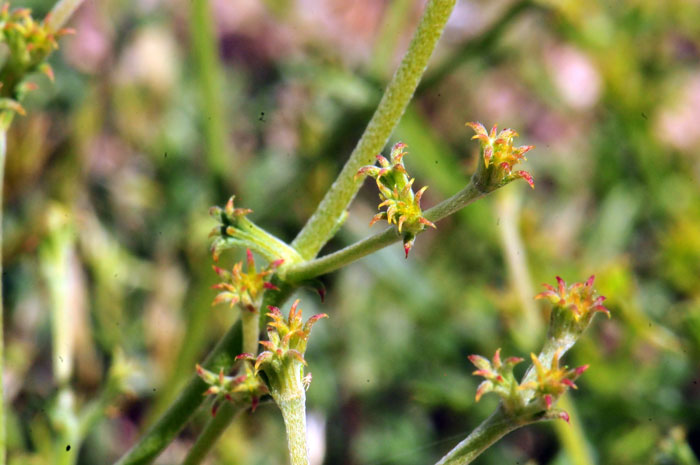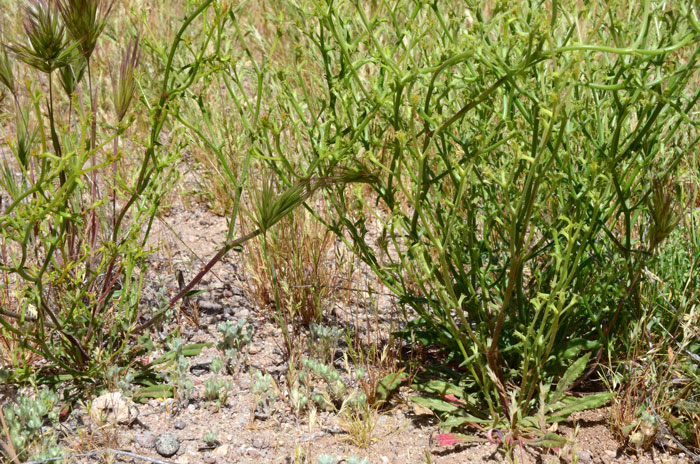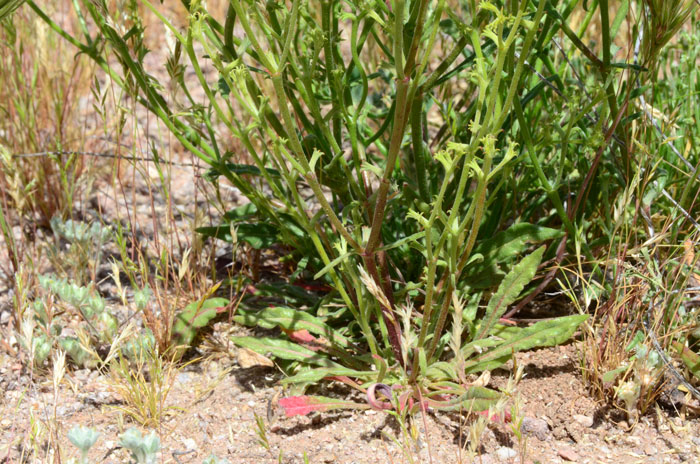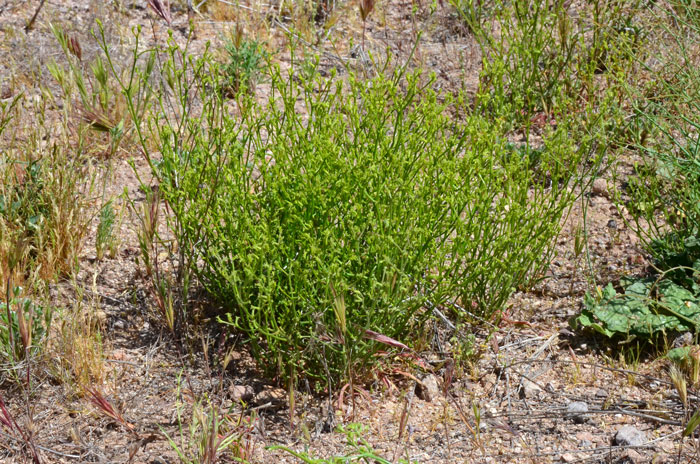Chorizanthe brevicornu, Brittle Spineflower




Scientific Name: Chorizanthe brevicornu
Common Name: Brittle Spineflower
Also Called: Sagebrush Chorizanthe
Family: Polygonaceae, Buckwheat Family
Synonyms: ()
Status: Native
Duration: Annual
Size: Up to 1 foot or so.
Growth Form: Forb/herb; erect; stems greenish, dichotomously branched, foliage leaves in a basal rosette soon disappearing.
Leaves: Green; stem leaves mostly bract-like; opposite; leaf shape variable; lanceolate to narrowly elliptical or oblanceolate.
Flower Color: White or greenish-yellow; sepals and petals collectively referred to as a perianth;
Flowering Season: March to May, February to May in California.
Elevation: 2,500 feet or lower.
Habitat Preferences: Common; sandy or gravelly soils, various plant associations including mixed grassland, saltbush, creosote bush, sagebrush communities and pinyon-juniper.
Recorded Range: Chorizanthe brevicornu is found in the southwest United States in; AZ, CA, ID, NM, NV, OR, UT. It is also native to Baja California and northwest Mexico. In Arizona it is found in the western ⅔ of the state and in Graham county.
North America & US County Distribution Map for Chorizanthe brevicornu.
U.S. Weed Information: No information available.
Invasive/Noxious Weed Information: No information available.
Wetland Indicator: No information available.
Threatened/Endangered Information: No information available.
In the southwestern United States for Chorizanthe, there are approximately; 4 species in Arizona and Nevada, 34 species in California, 1 species in New Mexico, zero species in Texas, and 3 species in Utah.
There are 2 varieties for Chorizanthe brevicornu:
Chorizanthe brevicornu var. brevicornu, Brittle Spineflower (AZ, CA, NM, NV, UT);
Chorizanthe brevicornu var. spathulata, Great Basin Brittle Spineflower (CA, ID, OR, NV).
Comments: In Arizona, the genus Chorizanthe is found in the most desertic parts of the state. Type species for Chorizanthe brevicornu from the Gila River, Arizona. In Southwest Desert Flora also see Rigid Spineflower, Chorizanthe rigida.
Chorizanthe brevicornu var spathulata is known only from the cold deserts of the Inter-mountain West.
Chorizanthe brevicornu var brevicornu is known only from the warm Mojave and Sonoran deserts.

